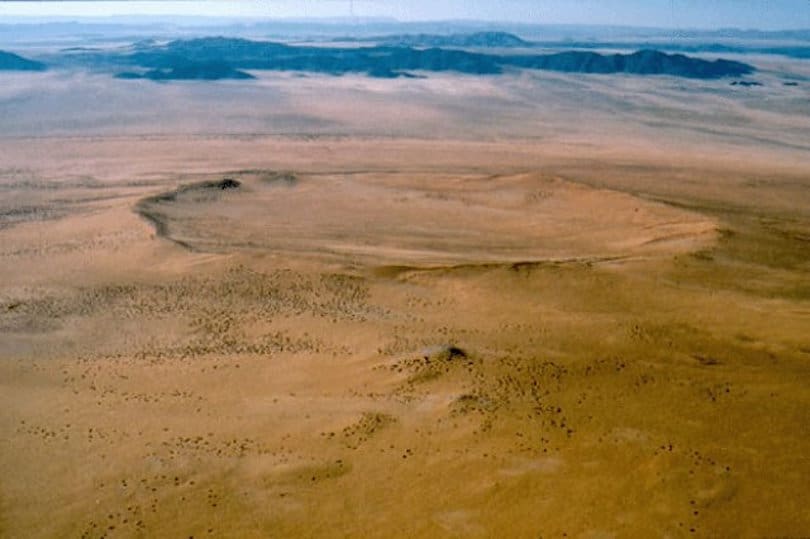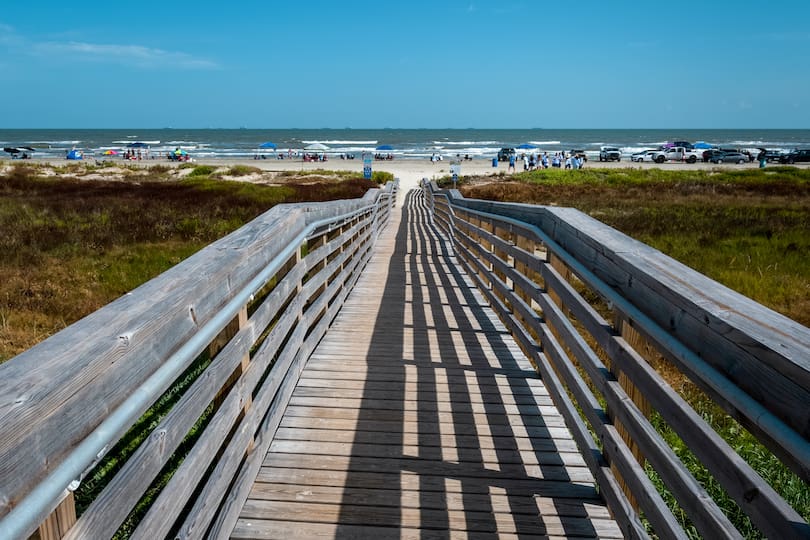If you look at the surface of the Earth, it may seem like a calm and stable place. But, the reality is that our planet has been hit by meteorites, asteroids, and comets countless times throughout its history. These impacts can create enormous craters that can be seen from space. In this article, we will explore 11 of the most fascinating impact craters on Earth.
Introduction
The Earth has been impacted by celestial objects for millions of years. These impacts have shaped the surface of our planet and left behind some of the most spectacular natural wonders. From the massive Vredefort Dome to the picturesque Meteor Crater, each impact crater tells a unique story of the Earth’s violent past. In this article, we will take a closer look at 11 of the most fascinating impact craters on Earth.
1. Vredefort Dome
The Vredefort Dome is located in South Africa and is the largest verified impact crater on Earth. It was created over 2 billion years ago when a meteorite estimated to be between 5 and 10 kilometers in diameter struck the Earth. The impact caused the Earth’s crust to rebound, forming a dome-shaped structure that is now visible on the surface. The Vredefort Dome is so large that it can only be fully appreciated from space.
2. Chicxulub Crater
The Chicxulub Crater is located off the coast of Mexico’s Yucatan Peninsula and is famous for being the impact site of the asteroid that led to the extinction of the dinosaurs. The asteroid was estimated to be between 10 and 15 kilometers in diameter and impacted the Earth approximately 66 million years ago. The impact released energy equivalent to billions of atomic bombs and caused a global mass extinction event.
3. Sudbury Basin
The Sudbury Basin is located in Ontario, Canada, and is one of the largest known impact craters on Earth. It was created approximately 1.85 billion years ago when a meteorite approximately 10 kilometers in diameter struck the Earth. The impact caused the Earth’s crust to melt, creating a large basin that is now home to one of the world’s largest nickel mines.
4. Manicouagan Crater
The Manicouagan Crater is located in Quebec, Canada, and is one of the oldest and best-preserved impact craters on Earth. It was created approximately 214 million years ago when a meteorite approximately 5 kilometers in diameter struck the Earth. The impact created a circular lake, which is now the largest visible feature of the crater.
5. Popigai Crater
The Popigai Crater is located in Siberia, Russia, and is one of the largest impact craters on Earth. It was created approximately 35 million years ago when a meteorite approximately 8 kilometers in diameter struck the Earth. The impact created a circular depression that is now home to one of the world’s largest diamond mines.
6. Acraman Crater
The Acraman Crater is located in South Australia and is one of the best-preserved impact craters on Earth. It was created approximately 580 million years ago when a meteorite approximately 5 kilometers in diameter struck the Earth. The impact created a circular depression that is now filled with water, creating a beautiful lake that attracts tourists from around the world.
7. Meteor Crater
The Meteor Crater is located in Arizona, USA, and is one of the most famous impact craters on Earth. It was created approximately 50,000 years ago when a meteorite approximately 50 meters in diameter struck the Earth. The impact created a circular depression that is approximately 1,200 meters in diameter and 170 meters deep. The crater is now a popular tourist destination, and visitors can explore the impact site and learn about the history of the meteorite that created it.
8. Chesapeake Bay Crater
The Chesapeake Bay Crater is located in Virginia, USA, and is one of the largest known impact craters on Earth. It was created approximately 35 million years ago when a meteorite estimated to be between 4 and 8 kilometers in diameter struck the Earth. The impact created a circular depression that is now buried under layers of sediment and water. The crater is now an important source of oil and natural gas.
9. Ries Crater
The Ries Crater is located in Bavaria, Germany, and is one of the best-preserved impact craters on Earth. It was created approximately 15 million years ago when a meteorite estimated to be between 1 and 2 kilometers in diameter struck the Earth. The impact created a circular depression that is approximately 24 kilometers in diameter and 350 meters deep. The crater is now a popular tourist destination and is home to several towns and villages.
10. Haughton Crater
The Haughton Crater is located on Devon Island in the Canadian Arctic and is one of the most well-studied impact craters on Earth. It was created approximately 39 million years ago when a meteorite estimated to be between 2 and 3 kilometers in diameter struck the Earth. The impact created a circular depression that is approximately 23 kilometers in diameter and 1.3 kilometers deep. The crater is now a research site for scientists studying impact cratering and astrobiology.
11. Lonar Crater
The Lonar Crater is located in Maharashtra, India, and is one of the few impact craters on Earth that is formed in basalt rock. It was created approximately 50,000 years ago when a meteorite estimated to be between 1 and 2 kilometers in diameter struck the Earth. The impact created a circular depression that is approximately 1.8 kilometers in diameter and 150 meters deep. The crater is now a popular tourist destination and is surrounded by a beautiful lake and forest.
Travel Tips & Other Tourist Attractions
If you’re planning to visit any of the impact craters mentioned above, here are some travel tips to help you make the most of your trip:
- Check the weather forecast before you go, as some of these impact craters may be located in areas with extreme weather conditions.
- Wear comfortable shoes and clothing, as many of these impact sites involve hiking or walking.
- Bring plenty of water and snacks, as some of these impact craters may be located in remote areas with limited facilities.
- Consider hiring a guide or joining a tour group to learn more about the history and geology of the impact crater.
- Don’t forget to bring a camera to capture the breathtaking views and landscapes.
Aside from the impact craters themselves, there are many other tourist attractions and activities to enjoy in the surrounding areas. Here are some suggestions:
- Visit museums and visitor centers to learn more about the impact craters and the history of the surrounding area.
- Take a scenic drive or hike through the nearby national parks and forests.
- Try local cuisine and visit nearby towns and cities to experience the local culture.
- Go stargazing at night, as many of these impact craters are located in areas with low light pollution and offer stunning views of the night sky.
Whether you’re a history buff, a geology enthusiast, or simply someone who enjoys exploring the great outdoors, visiting an impact crater is an unforgettable experience that will leave you with a deeper appreciation of our planet and the universe we live in.
Conclusion
The Earth’s history is marked by countless impacts from celestial objects, and each impact has left behind a unique and fascinating crater. From the massive Vredefort Dome to the picturesque Lonar Crater, these impact sites provide us with a glimpse into the violent and awe-inspiring forces that have shaped our planet. As we continue to explore the mysteries of the universe, these impact craters will remain important reminders of the incredible forces at play in our solar system.
FAQs
- How do impact craters form on Earth?
- How do scientists study impact craters?
- Are there any impact craters on other planets in our solar system?
- What is the difference between a meteor and a comet?
- Can impact craters affect the climate of the Earth?
- Can I visit all of the impact craters mentioned in this article?
- Are there any safety concerns when visiting impact craters?
- How long does it take to fully explore an impact crater?
- Is there any accommodation available near impact craters?
- Can I collect samples from impact craters for scientific research?


